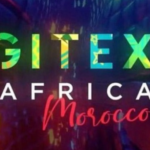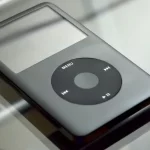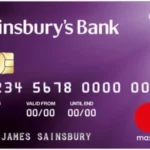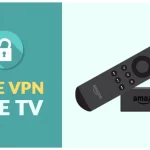In the era of streaming services and digital music, it may come as a surprise to many that jukeboxes are making a comeback. That’s right, those iconic machines that once dominated diners and bars in the 50s and 60s are now finding a new audience in the digital age. With their retro charm and unique ability to bring people together over music, jukeboxes are becoming a popular addition to modern-day hangouts. But why the sudden resurgence? Is it nostalgia for a simpler time or something more? In this article, we’ll explore the reasons behind the comeback of jukeboxes and why they are once again becoming a staple of social gatherings. From their history to their modern-day adaptations, we’ll dive into the world of jukeboxes and discover why they are here to stay.
History of Jukeboxes
The jukebox has a long and fascinating history, dating back to the late 1800s when coin-operated machines were first introduced. These early machines played phonograph records and were often found in public places such as train stations and amusement parks. However, it wasn’t until the 1930s that the first true jukebox was invented. The first jukeboxes were large, cumbersome machines that played only one record at a time. But they quickly became popular, and by the 1940s, jukeboxes could be found in nearly every diner, bar, and club in the United States.
During the 1950s and 60s, the jukebox reached the height of its popularity. With the rise of rock and roll and the explosion of youth culture, jukeboxes became a symbol of rebellion and freedom. Teenagers would gather around the jukebox, flipping through the records and choosing their favorite songs. The jukebox was not just a machine – it was a social hub, a place where people could come together over music and connect with one another.
The Decline of Jukeboxes in the Digital Age
However, as technology advanced and digital music became more prevalent, the jukebox began to lose its appeal. With the rise of MP3 players and streaming services, people could now carry their entire music collection in their pocket. The idea of flipping through a stack of records to find the perfect song seemed outdated and impractical. In addition, many jukeboxes were poorly maintained and suffered from technical issues, making them unreliable and frustrating to use.
By the 1990s, the jukebox had all but disappeared from public spaces. They were replaced by digital jukeboxes that lacked the charm and personality of their mechanical predecessors. For many people, the jukebox became a relic of a bygone era, a nostalgic reminder of a simpler time.
Why Jukeboxes are Making a Comeback
Despite their decline, jukeboxes never completely disappeared. In recent years, they have started to make a comeback, with a new generation of fans discovering their unique appeal. So why are jukeboxes making a comeback in the digital age?
One reason is nostalgia. As the world becomes more digital and interconnected, many people long for a simpler time when things were less complicated. The jukebox represents a bygone era, a time when people would gather around a machine and choose their favorite songs. For many, the jukebox is a nostalgic reminder of their youth, a symbol of a time when life was simpler and music was more meaningful.
But nostalgia alone cannot explain the resurgence of the jukebox. There are other factors at play as well. One of the main reasons is the unique experience that jukeboxes provide. Unlike digital music, jukeboxes allow people to physically interact with the music. They can flip through the records, read the song titles, and select their favorite tracks. This hands-on experience is something that cannot be replicated with a digital playlist.
Advantages of Jukeboxes over Digital Music
Another advantage of jukeboxes is their ability to bring people together. In a world where people are increasingly isolated and disconnected, jukeboxes provide a way for people to connect over music. They can gather around the machine, discuss their favorite songs, and share memories. The jukebox is not just a machine – it’s a social hub.
In addition, jukeboxes offer a level of unpredictability that is missing from digital music. With a digital playlist, you know exactly what songs are coming up next. But with a jukebox, you never know what’s going to play next. This element of surprise can be exciting and adds an element of fun to the experience.
The Modern Jukebox – Features and Technology
Modern jukeboxes have come a long way since their mechanical predecessors. Today’s jukeboxes are often digital, with touchscreens and advanced features. These modern machines can store thousands of songs and can be programmed to play specific genres or themes. Some even have Bluetooth capabilities, allowing people to connect their phones and play their own music.
But despite their modern features, today’s jukeboxes still retain the charm and personality of the original machines. They are still a social hub, a place where people can gather and connect over music. They still offer the hands-on experience that people crave, allowing them to physically interact with the music and choose their favorite songs.
Jukebox Rental and Sales
With the resurgence of jukeboxes, many companies now offer jukebox rental and sales. These companies provide jukeboxes for events, parties, and other social gatherings. They can also help people find and purchase their own jukeboxes for home use.
Jukebox rental and sales are becoming increasingly popular, as people look for unique ways to enhance their social gatherings. A jukebox can be a great addition to a party, providing a fun and interactive way for people to connect over music.
The Role of Jukeboxes in the Music Industry
Jukeboxes have always played a significant role in the music industry. In the past, they were a way for people to discover new music and connect with their favorite artists. Today, they continue to play a role in promoting new and upcoming artists.
Many jukeboxes now feature independent and local artists, giving them a platform to showcase their music. This is especially important in a world where mainstream music is becoming increasingly homogenized. Jukeboxes provide a way for people to discover new and exciting music that they might not hear on the radio or streaming services.
Jukebox-Themed Bars and Restaurants
As the popularity of jukeboxes continues to grow, many bars and restaurants are incorporating them into their decor. Jukebox-themed bars and restaurants are becoming increasingly popular, with jukeboxes serving as the centerpiece of the design.
These establishments offer a unique and nostalgic atmosphere, allowing people to connect with the past while enjoying the present. They often feature retro decor, vintage signage, and other nostalgic touches that harken back to a bygone era.
Conclusion
In conclusion, the resurgence of jukeboxes in the digital age can be attributed to a variety of factors. Nostalgia, unique experience, and social connection all play a role in their renewed popularity. As technology continues to advance and the world becomes more digital, the jukebox offers a way to connect with the past and enjoy the present. They are no longer relics of a bygone era, but a symbol of a timeless connection between people and music.









